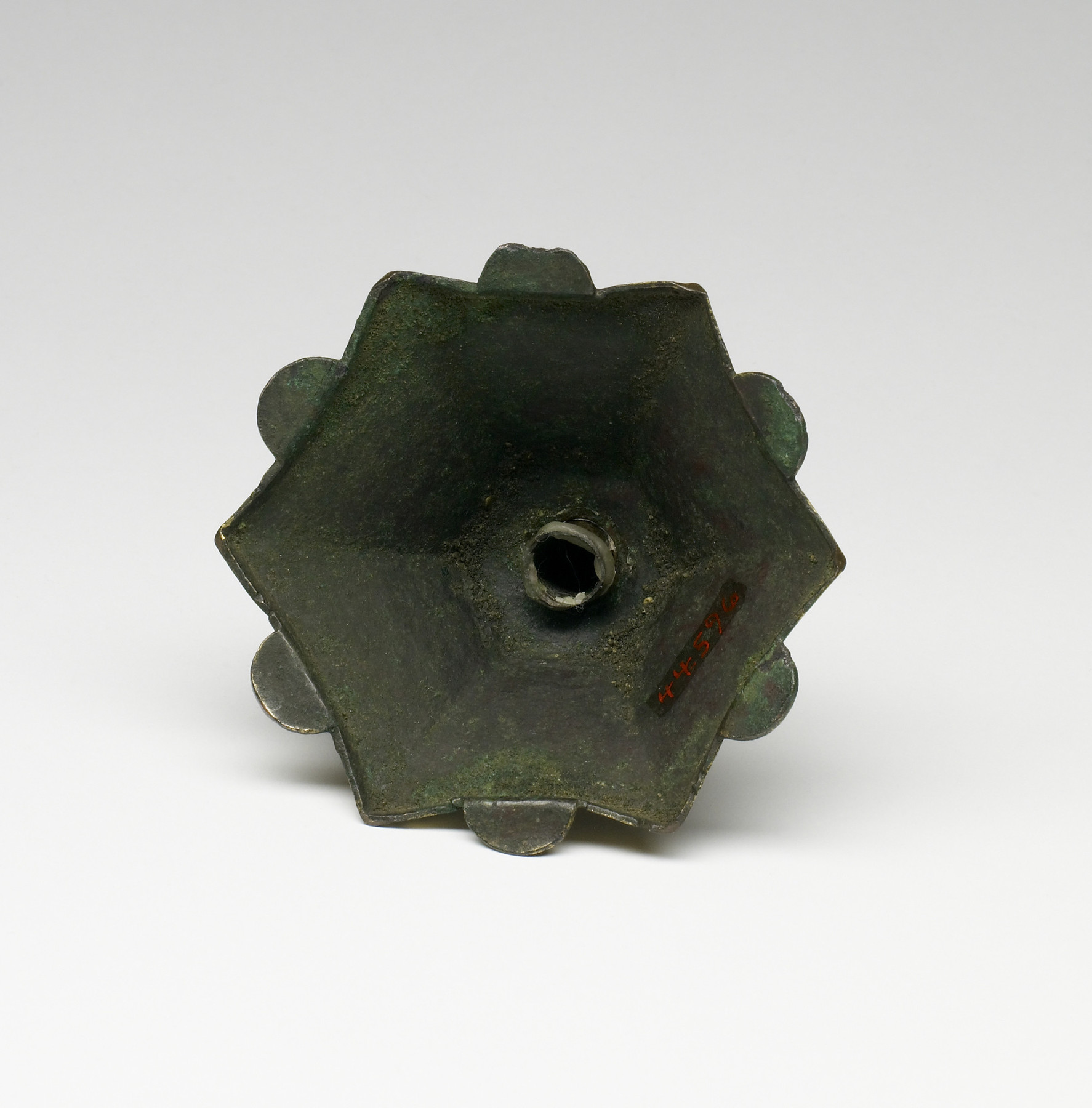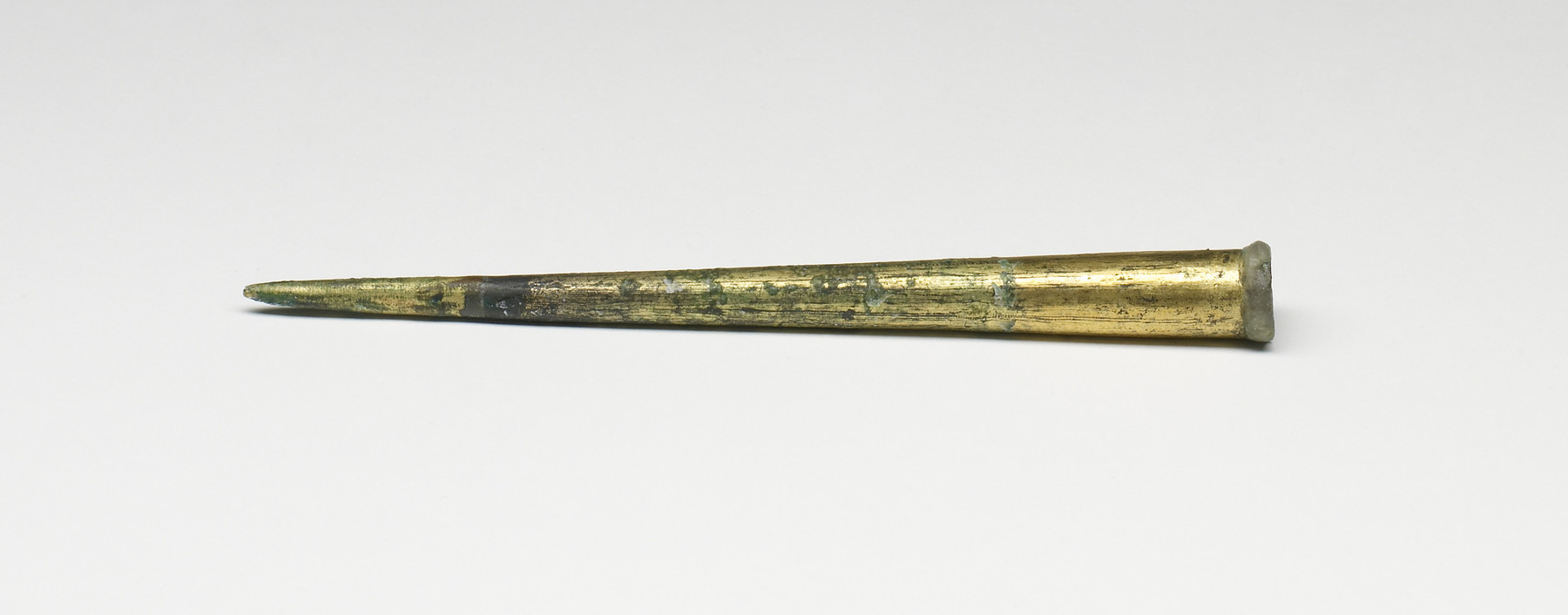Pricket Candlestick
(Medieval Europe )
The base of this pricket candlestick bears the combined arms of Bernard VIII (d. 1339), count of Comminges, and those of his second wife, Marguerite de Turenne, alternating with the fleur de lys, the heraldic emblem of the royal house of France. Although such personal items were often commissioned as gifts to commemorate special events, coats of arms did not necessarily refer to a specific patron but were part of workshops' decorative repertoire.
This candlestick could have been used in a domestic space where only a small area needed to be lit, such as a lady’s sewing table. The term “pricket” refers to the point upon which the candle is anchored. The fine enamel work seen here is characteristic of the region around Limoges. The support for the candle at the base of the pricket is missing.
Provenance
Provenance (from the French provenir, 'to come from/forth') is the chronology of the ownership, custody, or location of a historical object. Learn more about provenance at the Walters.
Baron Pichon, Paris, ca. 1897, by purchase; John E. Taylor, London, by purchase; Sale, London, 1912, no. 61; Raphael Stora, Paris and New York, by purchase; Joseph Brummer, Paris, by purchase; Brummer Sale, Parke-Bernet, New York, April 23, 1949, no. 715; Walters Art Museum, 1949, by purchase.
Exhibitions
| 1996-1997 | Russian Enamels. The Walters Art Gallery, Baltimore. |
| 1984-1985 | Illuminated Manuscripts: Masterpieces in Miniature. The Walters Art Gallery, Baltimore. |
Geographies
France, Limoges (Place of Origin)
Measurements
H: 7 1/16 x W: 3 11/16 x D: 3 15/16 in. (17.9 x 9.4 x 10 cm)
Credit Line
Museum purchase, 1949
Location in Museum
Accession Number
In libraries, galleries, museums, and archives, an accession number is a unique identifier assigned to each object in the collection.
In libraries, galleries, museums, and archives, an accession number is a unique identifier assigned to each object in the collection.
44.596












